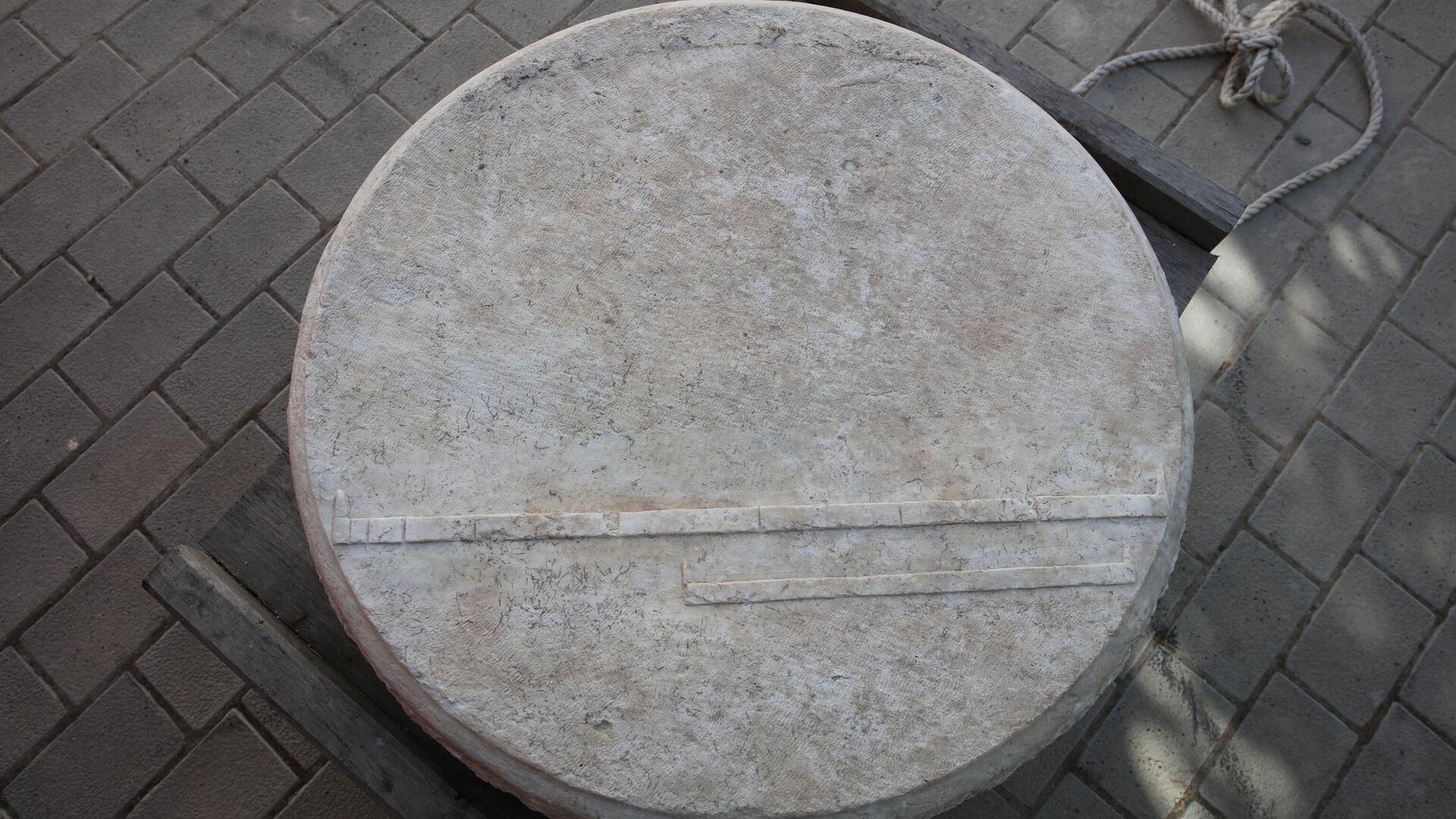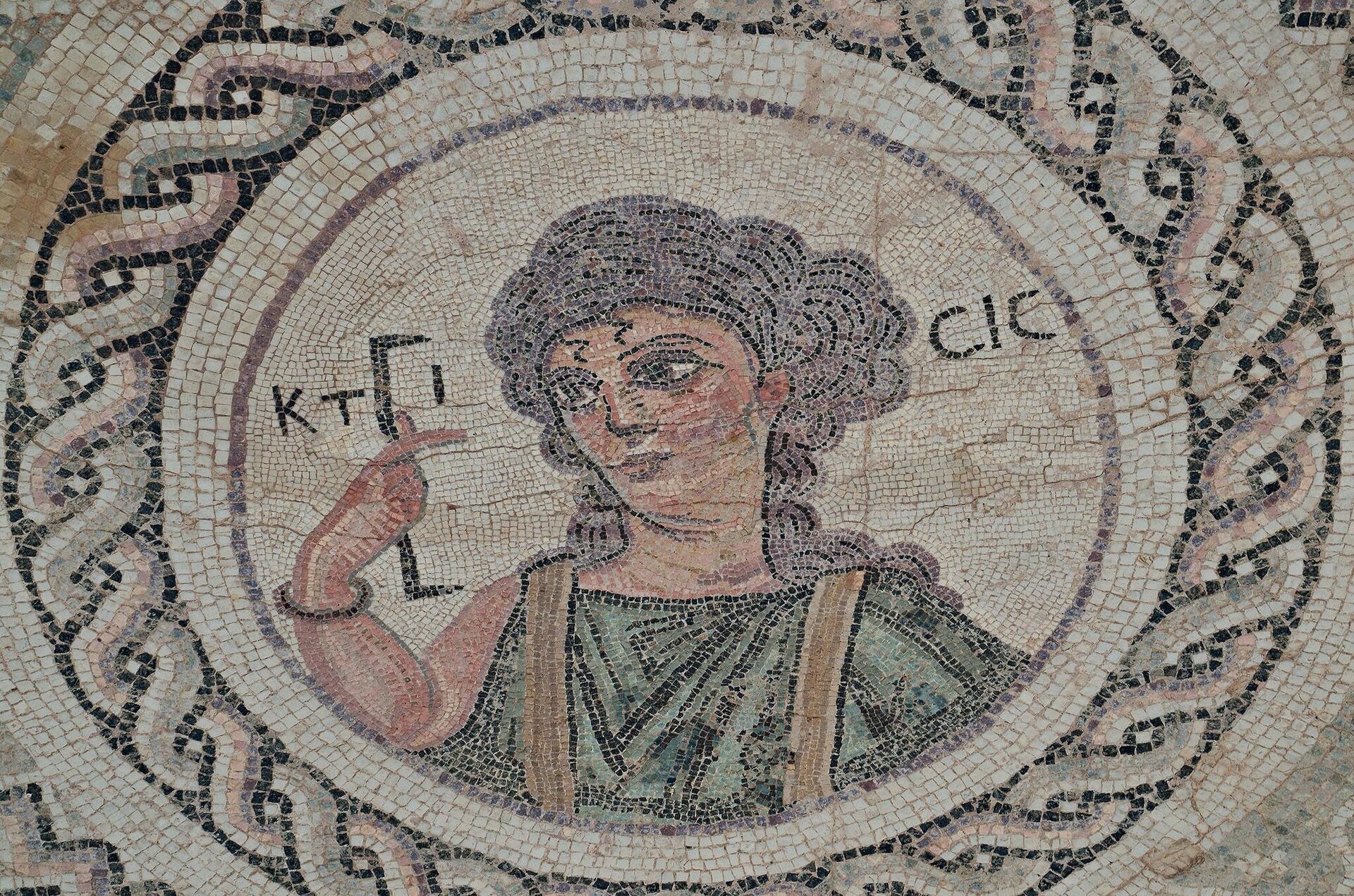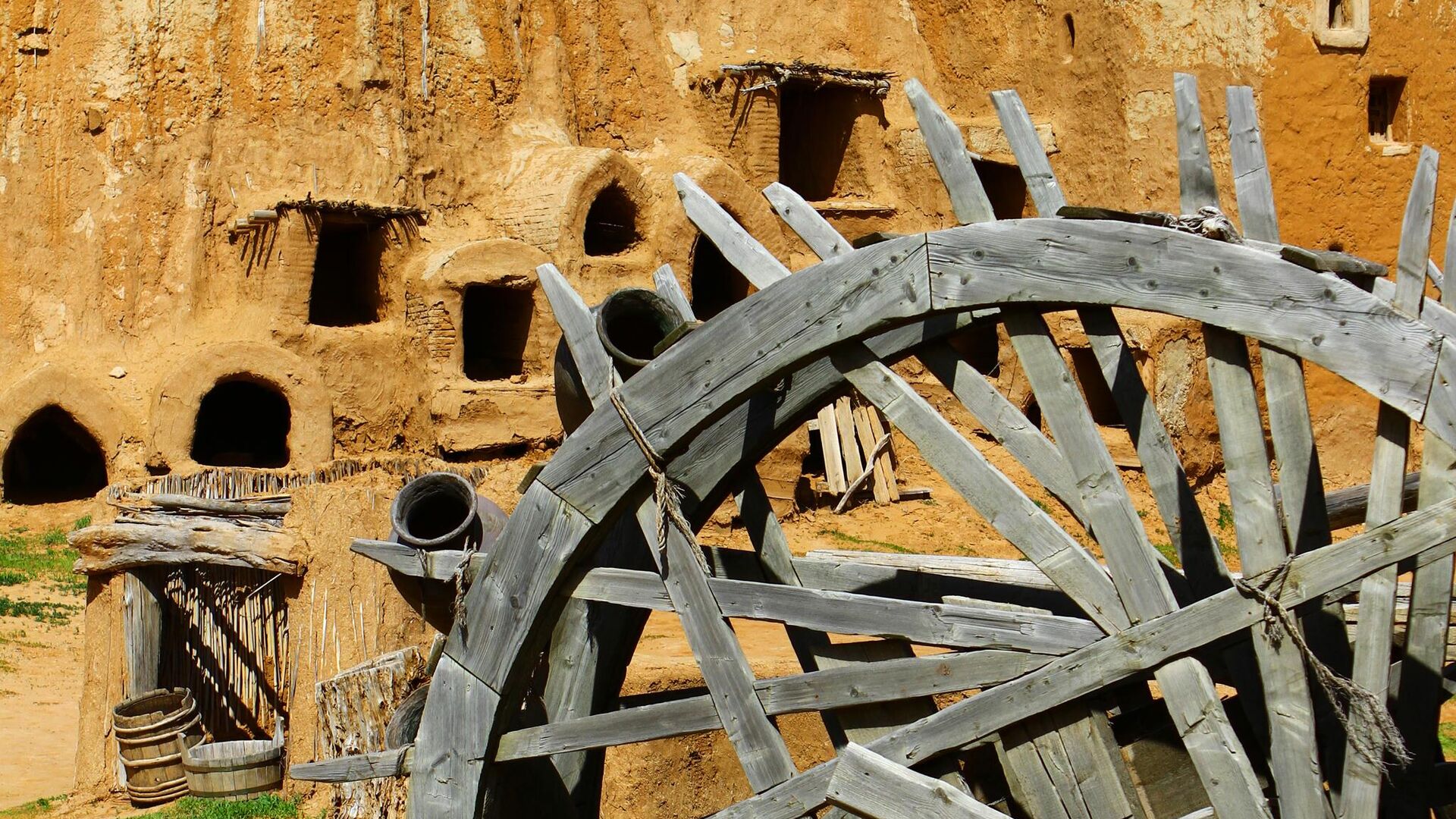
MOSCOW, July 5. A unique marble slab depicting measures of length was discovered during excavations of ancient Chersonese by employees of the state museum-reserve «Tavrichesky Chersonese» (Sevastopol). In their opinion, this scientific discovery is of global significance, the museum’s press service reported.
Archaeologists found an unusual artifact while exploring the intersection of the main street of ancient Chersonesos with the 15th transverse street of the city, in the backfill of a basement dating from early Byzantine times.
According to them, a completely preserved round marble slab lay face down in the cultural layer. It is a tabletop (mensa) with a diameter of 65 cm, covered with small notches. On part of the surface there are relief images of two long rectangular stripes, which are divided into segments by transverse lines. At the ends of the strips there are raised indicators.
“
"The images are rulers indicating the total length and proportional parts corresponding to the lengths of a certain metric system. The length of the small ruler is 29.4 cm, and the large one with markings is 55.6 cm. Obviously, this table was a metric standard established by the authorities of Chersonesos as a standard. He could be in a small room at the temple or at the entrance to the Agora,”—said the head of the department «Fortified settlement and necropolis» State Museum-Reserve «Chersonese Tauride» Daniil Kostromichev.
Today, most often people use a measuring ruler, but in ancient times there were many standards, each policy and state used their own. Discussions about the use of this or that practice continued for a long time. A unified, modern system of length measures began to take shape only in modern times, the scientist noted.
«The Greeks and Romans used the foot as a unit of length, but the Roman foot was shorter than the Greek foot. The Romans were the first to divide the foot into 12 smaller units. They also standardized the length using copper rods, which probably corresponded to the length of the emperor's foot. Each beat was divided into twelve equal parts, and ounce, a Roman word, meant a twelfth part,” Kostromichev explained.
According to him, the foot (29.6 cm on average) as one of the main measures of length was used in site planning, in sculpture and in architecture, in the module as the main conventional unit for coordinating the sizes of a statue and a building.
Among hundreds of other ancient Greek cities, Tauride Chersonesos stands out because in its district the ancient agricultural demarcation has been preserved, dividing the chora (Greek χώρα) (agricultural areas of the city) into areas of equal size.
“Chersonese researchers agree that when designing the Chersonese cadastre in the 4th century BC, the Greeks took as a basis the Egyptian orgy (ὀργυιά) of 2.094 m and the Egyptian cubit (52.35 m), which made up its fourth part. Somewhat larger The value of the cubit on the newly discovered standard probably indicates that the latter was made later, when the measurement system in the city underwent some measurements. This is also supported by the value of the local foot on the standard, which practically coincides with the value of the Roman foot,” said the senior scientist. Maxim Tyurin, employee of the «Chorus of Chersonese» department of the state museum-reserve «Tavrichesky Chersonese».
Finding a slab with images of measures length is truly unique, noted the scientific secretary of the museum Natalia Ginkut.
«Visualization of the measure of length of ancient times is very rare. In the world, for example, several images of Roman standards of the foot are known. All of them are stored in the Capitoline Museums in Rome. The average value of the standards Roman foot is 29.62 cm. The foot is also depicted on the early Byzantine mosaic of the late 4th — early 5th century AD from the house of Eustolius in Kourion in Cyprus,” she explained.
Chersonese scientists have only yet. they have to thoroughly study the unique find, but now they believe that the discovery of the “Chersonese foot” is one of the world’s.
“The “Chersonese foot” makes it possible to expand the horizons of research throughout the Mediterranean region, providing scientists with new opportunities,” concluded Natalia Ginkut .


























































Свежие комментарии